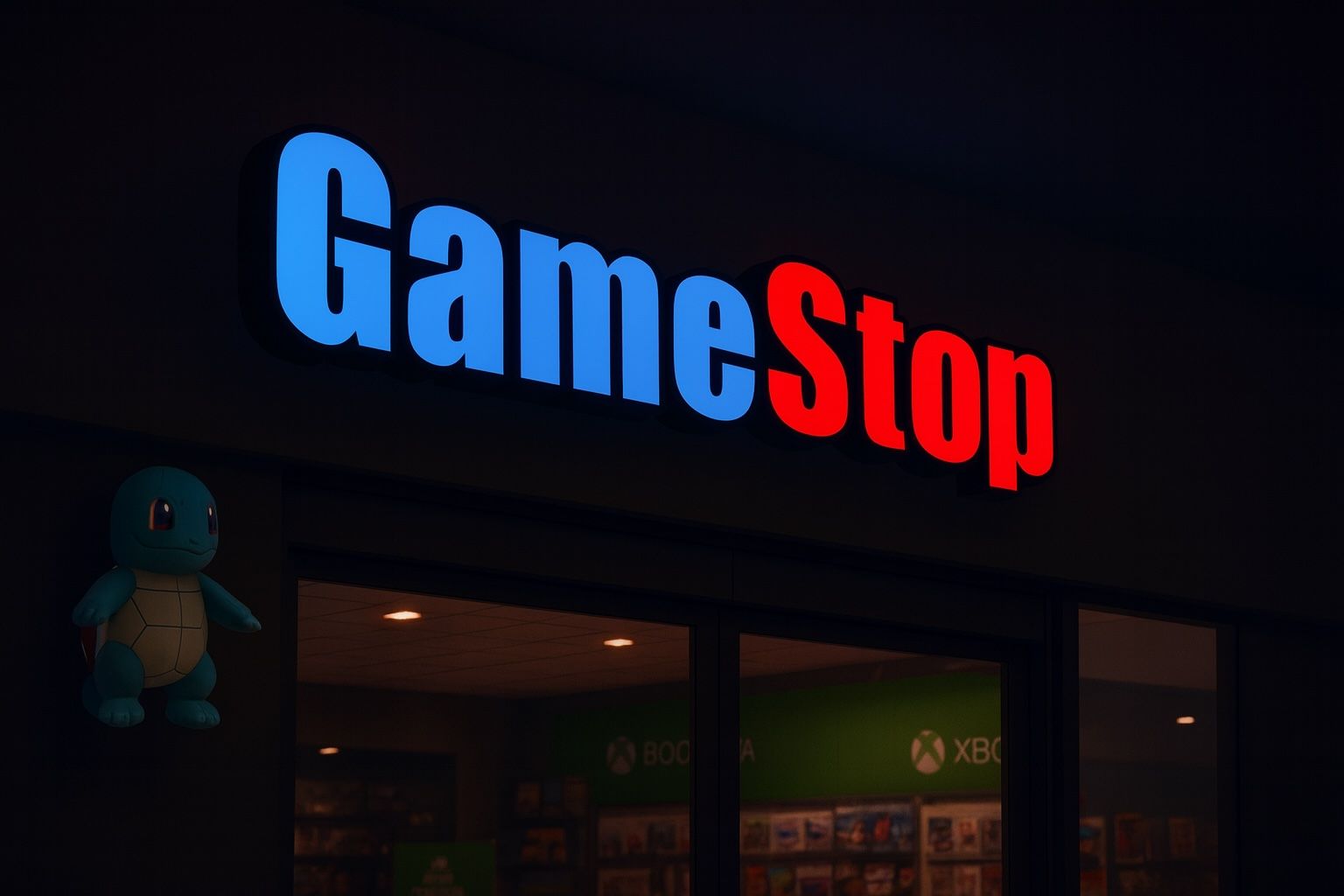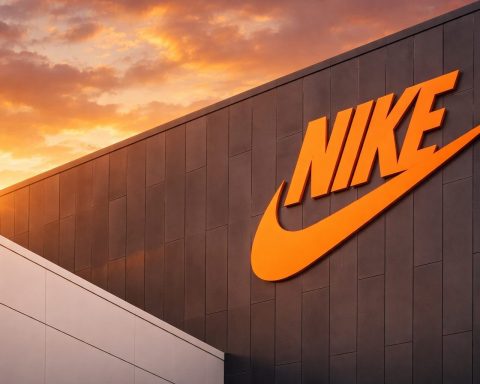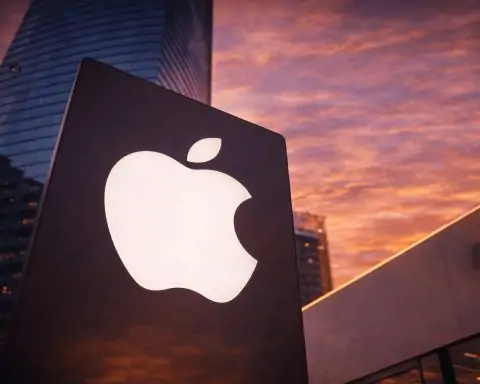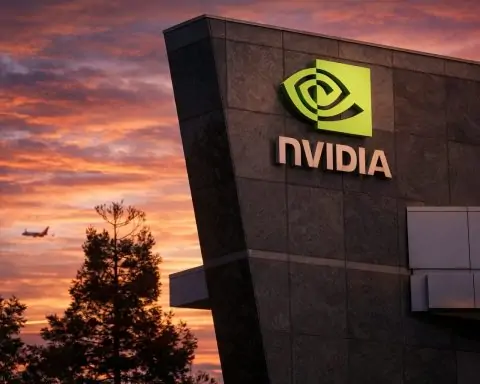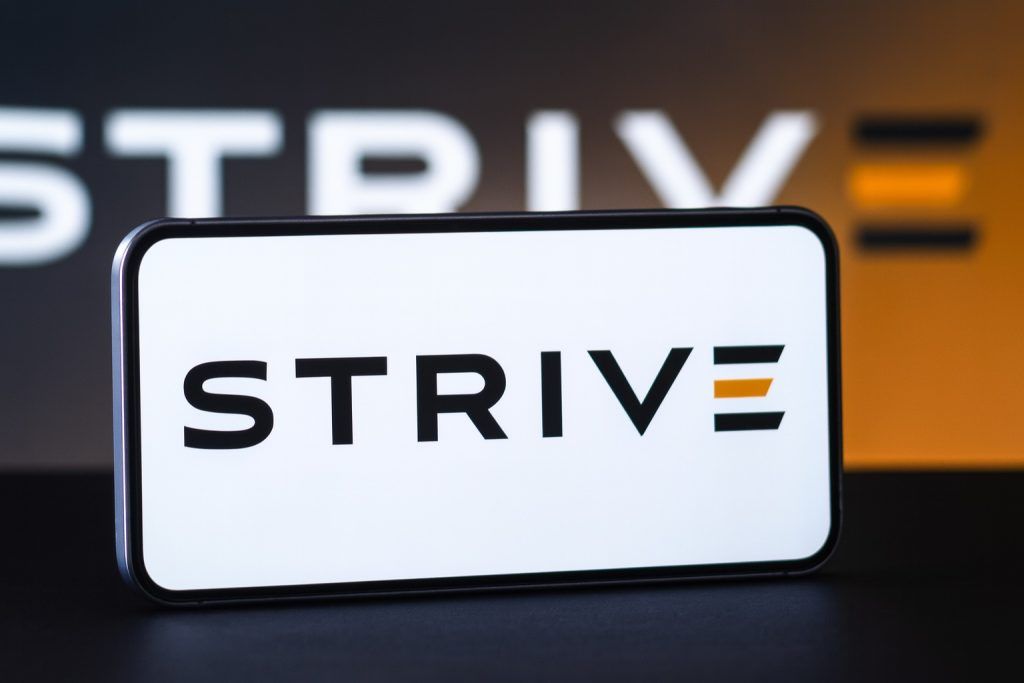- GME Stock on Oct 27 – GameStop’s stock is hovering around $23–$24 per share as of October 27, 2025, after a volatile month. Shares are roughly flat in early trading today following a 5% jump late last week [1]. The stock remains down about 25% year-to-date, trading nearer its yearly lows (~$20.5) than its highs (~$35.8) [2] [3].
- Latest Price Moves – GME rallied mid-October amid bullish options bets and retail enthusiasm. On Thursday Oct. 23 alone, the stock spiked +5.07% to $23.63 despite no new company news, as traders piled into call options (put/call ratio plummeting to 0.1, indicating extreme bullish betting) [4] [5]. However, the momentum cooled and shares ended last week at $23.30 [6].
- Corporate News & Developments – GameStop stunned investors with major moves in early October. It distributed special warrants to shareholders (1 warrant per 10 shares, exercisable at $32 by Oct 2026) and enacted an 11-for-10 stock split effective Oct. 3 [7]. The company also filed a mixed shelf registration to issue new stock, debt or other securities if needed [8]. These actions, aimed at fortifying GameStop’s capital, initially sent the stock tumbling (GME fell ~6–16% in early October) amid dilution fears [9], but they also fueled meme-trader speculation about a short squeeze. Short interest in GME is about 15–16% of the float, near yearly highs [10] [11].
- Pokémon Holiday Strategy – GameStop is betting big on Pokémon to revive sales. The retailer has coordinated a wave of Pokémon Trading Card Game releases and exclusive collectible bundles from Oct. 24 through Jan. 2026 [12]. Leaked schedules on social media show dozens of upcoming Pokémon card sets (priced $5.99 to $319.99) [13], part of GameStop’s push to become a collectibles hub rather than just a video-game seller [14]. Analysts say high-turnover collectibles like trading cards and figurines have become key to driving foot traffic and holiday sales [15], especially as traditional game software sales slow.
- Fundamentals Improving – Unlike the frenzy of 2021, GameStop now has real earnings and cash flow. It posted a profitable Q2 2025 (net income $168.6 million) on $972.2 million revenue (+21.8% YoY) [16] [17]. Collectibles sales surged +63% year-over-year in Q2 (to $228 M) and hardware sales jumped +31% [18], thanks in part to new console launches and trading-card demand. GameStop’s cost cuts (SG&A –19% YoY) and strategic shift to higher-margin products have boosted margins [19]. The company holds a cash war chest around $6–8 billion (over $11 per share in cash assets) and carries no long-term debt [20]. Notably, GME has amassed 4,700+ Bitcoins (valued ~$500 million) as part of its treasury – a bold crypto bet that adds both upside and risk [21] [22].
- Analyst & Expert Views – Wall Street coverage of GME is sparse and skeptical. Weiss Ratings recently reaffirmed a “Hold (C–)” rating [23], while Wedbush Securities – long one of the only GME analysts – has a “Strong Sell” on the stock with a price target around $13.50 [24]. In fact, the consensus 12-month target is only $13.50 (implying ~40% downside) and GameStop now lacks any major bullish analyst coverage】 [25] [26]. Experts caution that despite the turnaround in earnings, GME remains risky and richly valued (~32× P/E, far above retail industry norms) [27]. A recent MarketBeat analysis concluded that GameStop is “a stock to trade, not one to invest in” long-term until it proves its new strategy can deliver sustainable growth [28].
- Meme Traders & Sentiment – Retail investor buzz is back, though more muted than in 2021. GME has frequently trended on social media in recent weeks [29], as communities on Reddit (r/Superstonk, r/GME) cheer the profitable quarter and dissect technical charts [30]. On X (Twitter), even critics like goldbug Peter Schiff weighed in – calling any Bitcoin-fueled rally “short-lived” as “smarter investors are selling” [31]. Stocktwits data last week showed GME as the #1 trending ticker on the platform, with message volumes up 70% as retail traders debated the warrant issue and the stock’s bottom [32] [33]. Sentiment was mixed: some frustrated by recent declines, others optimistic about a rebound and even a short squeeze scenario [34] [35]. Overall, social sentiment has improved from its lows but remains cautious-bullish at best [36].
GME Stock Struggles After Early October Surge
GameStop’s stock price has seesawed through October, giving both bulls and bears plenty of fodder. As of Monday morning (Oct. 27), GME trades around $23.30 per share [37], little changed from last week’s close. This level is roughly 25% below where it started the year and nearer to the stock’s 52-week low (~$20.54) than its high (~$35.81) [38] [39]. In other words, much of 2025’s earlier rally has faded, though the stock is still up modestly year-on-year.
Just last week, GameStop enjoyed a burst of momentum: on Thursday the 23rd the stock jumped over 5% to $23.63 [40], catching traders’ attention. The rally came seemingly out of nowhere, with no major news from the company. Instead, bullish options trading appeared to drive the surge – volumes of call options exploded to ~233,000 contracts (well above average), while bearish put activity dried up [41]. By the end of that session the put/call ratio hit just 0.1 (its most lopsidedly bullish level since July), revealing traders “firmly betting on more upside” for GME in the very short term [42]. This kind of options-fueled spike is reminiscent of GameStop’s meme-stock heydays, when speculative flurries could send shares rocketing.
However, the exuberance was short-lived. Friday saw a slight pullback to $23.30 (-1.4%) [43], and so far Monday the stock is holding in the low-$23 range. Despite two big upswings this year – one in spring and one in early fall – GME’s overall trend remains choppy. “Huge gains are still paired with steep drawdowns,” one analyst noted, though he added that “this time the company’s fundamentals are improving” behind the scenes [44]. That improving fundamental story may be key to whether GameStop can break out of its trading range or if these rallies stay “fluff rather than substance” [45].
Major Moves: Stock Split, Warrants, and a Cash Raise
Several corporate actions in October jolted GME’s stock and fanbase. On October 3, GameStop’s board executed an unusual 11-for-10 stock split – essentially a 10% stock dividend that slightly boosted shareholders’ count of shares [46]. At the same time, the company issued warrants to all stockholders (1 warrant per 10 shares owned) as a loyalty reward. Each warrant gives the holder the right to buy one new GME share at $32 (above the market price) any time through October 2026 [47]. These “bonus” warrants could raise new capital if exercised down the road, but only if GameStop’s stock rises substantially above $32.
To add to the surprise, GameStop also quietly filed an SEC shelf registration (Form S-3ASR) in early October allowing it to issue and sell new securities (stock, debt, or warrants) at will [48]. In effect, the company gave itself a flexible ATM-style financing option: management can tap the markets for cash quickly if needed, without a separate announcement each time. This move, which included potential common stock sales and debt offerings, was described in filings only in broad terms (no specific amount was set) [49].
The market’s reaction to these maneuvers was swift and mixed. Initially, shares tumbled on fears of dilution – GameStop’s stock fell about 6.8% on Oct. 3 after the shelf prospectus news hit, and extended its slide to a 16% drop over the first week of October [50]. Some retail shareholders felt blindsided and even betrayed. On forums and Stocktwits, critics blasted chairman/CEO Ryan Cohen, accusing him of “scamming” loyal investors with surprise dilution [51]. The warrants distribution in particular sowed confusion, since issuing one warrant per 10 shares is not a typical corporate action; many wondered if it signaled an upcoming cash grab or a clever ploy.
GameStop’s leadership defended the moves as forward-looking. By issuing out-of-the-money warrants at $32, the company avoids immediate dilution (no new shares unless the stock goes above $32) and rewards long-term holders with a chance to participate in future gains. Some bullish shareholders even applauded the plan – noting that warrants could “eliminate the need for a dilutive offering during any short squeeze and add buy pressure when converted,” essentially boxing in short sellers [52]. As one investor argued, the mechanism is a “compliant way to strengthen the balance sheet and expose short positions” without flooding the market with shares [53]. In theory, if GameStop’s stock surges beyond $32 (as it famously did in past squeezes), these warrants could inject fresh capital into the company instead of just rewarding exiting shorts.
So far, the jury is out. The stock’s early-October slide suggests many investors were rattled by the potential dilution. Yet the very speculation that GameStop “armed” itself for a battle with short sellers has rallied some of the meme-trader base. Online forums lit up with talk of an incoming “mother of all short squeezes,” pointing to the short interest hovering around ~15% of float as fuel [54] [55]. Top trending status on Stocktwits in mid-October showed renewed retail focus on GME after the warrants drop [56]. Still, sentiment remains cautious overall – Stocktwits data as of Oct. 22 showed the community labeled GME only “bearish” to neutral, despite the spirited debate, and year-to-date the stock was down 27% at that point [57]. In short, the warrant gambit has been a double-edged sword: it reinforced GameStop’s capital flexibility, but reminded shareholders that meme glory comes at a price (potential dilution).
Betting on Pokémon: GameStop’s Collectibles Play for Holidays
Amid the financial engineering, GameStop’s management is also refocusing the core business – with a fresh twist that has many in the gaming community intrigued. This holiday season, GameStop is going all-in on Pokémon trading cards and collectibles as a key pillar of its turnaround strategy.
According to an internal schedule leaked on social media, GameStop has lined up dozens of exclusive Pokémon Trading Card Game (TCG) product launches from late October through January [58]. These include everything from $5 booster packs to deluxe $300+ collector’s boxes and even crossover bundles (like Magic: The Gathering x Pokémon) [59]. The first wave kicked off around Oct. 24 and more releases are planned weekly through Jan. 23 [60].
The strategy is clear: position GameStop stores as destination hubs for collectibles – not just video games. By coordinating with The Pokémon Company International to secure steady inventory allocations (after years of supply shortages), GameStop aims to draw crowds of card enthusiasts into its stores throughout the holiday season [61]. Popular Pokémon card “drops” have proven to drive in-store traffic and even frenzy; big-box rival Target famously had to limit Pokémon card sales in 2021 due to safety issues amid a collector craze [62] [63]. GameStop hopes to capture that lightning in a bottle: its plan includes strict purchase limits on hot items to create controlled scarcity and excitement [64].
On social media, news of GameStop’s Pokémon push spread quickly. Enthusiast accounts on X (Twitter) shared photos of the “GameStop Pokémon Drop Schedule,” and Instagram collectors’ pages hyped specific restocks [65] [66]. One popular Pokémon alert account, PokeNotify, amplified buzz about a confirmed restock of the rare “Mega Evolution” card line, sending fans scrambling to plan store visits [67]. The message: GameStop has what collectors want – and they’re going to make the most of it this holiday.
Behind this Pokémon gambit is a broader pivot. GameStop has been reallocating floor space and marketing toward high-margin collectibles, trading cards, figurines, and pop culture merchandise. These products tend to sell out quickly and often bring repeat visits from hobbyists hunting limited-edition items. Crucially, collectibles have far better profit margins than new video game consoles or software, which are often low-margin or loss leaders [68]. By leaning into collectibles, GameStop is chasing profitable revenue and a niche where enthusiasm (and pricing power) still run high [69] [70], even as digital downloads erode the physical game disc business.
Early results are promising: in Q2, GameStop’s collectibles category revenue soared to $228 million (approximately 23–25% of total sales) after a 63% YoY jump [71] [72]. This meteoric growth validated CEO Ryan Cohen’s emphasis on the segment. “Collectibles like trading cards have experienced a surge in value, growing to a $13 billion business in 2025,” noted one market report, and unlike NFTs, “tangible cards require a physical location for transactions” – playing to GameStop’s retail strength [73]. In essence, the collectibles boom is giving GameStop stores a new lease on life, turning them into community hubs for card traders and collectors in a way that purely digital marketplaces can’t easily replicate.
Of course, questions remain whether this trend is sustainable. The trading card frenzy has seen booms and busts before. Yet for now, GameStop is embracing its role as a purveyor of “geek culture” merchandise. Even beyond Pokémon, the company has inked deals for exclusive editions (for instance, a special Borderlands 4 game bundle only at GME) and expanded its toy, apparel and electronics accessory offerings [74]. The goal: to diversify away from the shrinking physical video game market and become a broader specialty retailer for gamers and collectors.
This quiet evolution hasn’t escaped notice. As one InvestorsObserver analysis put it, GameStop is “repositioning itself as something closer to a mini–Berkshire Hathaway, supported by a growing fortress of cash” – tongue-in-cheek perhaps, but highlighting the company’s cash-rich balance sheet and intent to invest opportunistically [75]. A long-time shareholder, Donatas Macinskas, said GameStop’s newfound financial discipline gives it “the flexibility to raise capital strategically and evolve into a more resilient holding-company model.” [76] In other words, management could use its cash and equity to buy stakes in complementary businesses down the line (much like Berkshire invests in diverse assets) – a far cry from the mall retailer of old. While that comparison might be extreme, it underlines that GameStop is actively shedding its pure-“meme stock” identity and attempting to prove it has a viable second act beyond the 2021 hype [77].
Earnings Rebound: From Losses to Profits in One Year
Fueling the cautious optimism around GameStop is a significant financial turnaround over the past year. The company that was bleeding cash in 2022 is now posting surprise profits in 2025 – a development even many bulls did not expect so soon.
In September, GameStop announced robust results for fiscal Q2 2025 (May–July): net sales of $972.2 million (up +21.8% year-on-year) and earnings of $0.25 per share [78] [79]. Wall Street analysts had expected only about $900 million in revenue and EPS of $0.19, so GameStop beat on both top and bottom lines [80]. It was the company’s first double beat in two years – the last time GME exceeded expectations like that was back in mid-2023 [81].
Crucially, this wasn’t a one-off fluke. GameStop also turned a profit in Q1 2025 (reporting net income of ~$45 million) after a long string of quarterly losses [82]. For context, in Q1 2024 a year prior, GameStop had lost about $32 million [83]. The swing from red to black has been attributed to aggressive cost-cutting and refocusing on core businesses under Ryan Cohen’s leadership [84]. Over the past year, the company closed underperforming stores (especially in Europe and Canada), slashed SG&A expenses by nearly 20% [85], and improved its inventory management to boost cash flow. The result: operating income turned positive and profit margins have risen to levels not seen in years (net margin was ~9.4% last quarter) [86].
One eyebrow-raising factor in GameStop’s earnings is its crypto holdings. The company’s board approved holding cryptocurrencies as part of its treasury last year, and by Q2 2025 GameStop had accumulated 4,710 Bitcoin on its balance sheet [87]. Thanks to the surge in Bitcoin’s price this year (recently around the $110k level [88]), GameStop recorded significant paper gains on its crypto – which boosted its net income. In fact, management noted that part of the $168.6 M profit in Q2 was due to “crypto gains” on Bitcoin [89]. This essentially means GameStop benefited as an investor, not just a retailer, in the quarter. However, this also introduces volatility: if crypto prices dip, those gains could reverse. Analysts like Weiss have flagged Bitcoin exposure as a double-edged sword for GME’s stock [90], since it ties a meme stock to an arguably even more volatile asset class.
Stepping back, GameStop’s financial footing today is markedly stronger than during the meme craze. The company holds roughly $8.7 billion in cash and marketable securities as of the last quarter [91] – an astonishing sum equal to more than a third of its market capitalization. (For comparison, GameStop’s entire market cap at $23/share is around $10–12 billion.) Even subtracting all liabilities, GME still has about $5 billion in net cash [92]. This liquidity gives GameStop a deep “fortress” balance sheet, providing cushion to weather downturns and invest in new ventures. The current ratio (a measure of short-term liquidity) stands above 11, and the debt-to-equity ratio is a low ~0.8 [93] [94], reflecting minimal debt use. In short, bankruptcy risk – once a real concern – is off the table for now. GameStop can cover its expenses many times over and even pursue acquisitions or expansion, if it finds compelling opportunities.
Looking ahead, Q3 2025 earnings will be the next major catalyst, expected in early December. Wall Street forecasts are modestly upbeat: analysts predict GameStop will report EPS of ~$0.20 for Q3, up from just $0.06 in the same quarter last year [95]. Revenue is projected around $987 million (roughly +15% YoY) [96], which would mark a second straight quarter of double-digit growth. If GME delivers on those numbers – and especially if it surprises to the upside again – it could reinforce the narrative that the turnaround is real. Bulls argue that holiday sales (Q4) could be even stronger given the Pokémon initiative and new game console releases on the horizon [97]. Bears counter that GameStop’s glory days of $1+ billion quarterly revenues are mostly behind it – the company has only exceeded $1B once since late 2023 [98]. They worry that initial sales pops (from collectibles or hardware launches) may not be sustainable long-term, especially if consumer spending softens in a cooling economy [99].
What Do Analysts and Experts Say?
Despite GameStop’s improving financials, most professional analysts remain unconvinced that GME is a good buy at current prices. Coverage of GameStop by Wall Street firms has actually dwindled – a reflection of both its meme-stock stigma and the company’s decision in 2022 to stop holding investor earnings calls. As of this month, only two firms are officially rating the stock [100]. One is Weiss Ratings, which in late October reiterated a “Hold (C–)” grade on GME [101]. The other is Wedbush Securities, known for its long-term bearish stance; Wedbush most recently tagged GameStop as a “Strong Sell” (downgraded over the summer) with a $13.50 price target [102]. According to MarketBeat, the average recommendation for GME is effectively “Reduce/Sell”, and the $13.50 target implies ~40% downside from current levels [103] [104].
It’s worth noting that Wedbush’s veteran retail analyst Alicia Reese, who was among the last to cover GameStop, abruptly dropped coverage of the company in late September [105]. That move left a peculiar void – no big bank analysts actively covering GME – which is highly unusual for a company of GameStop’s size. (Weiss, which continues to rate it, is an independent research service.) This lack of coverage may reflect how far GameStop has strayed from traditional fundamentals during the meme saga. It also means investors have fewer “official” viewpoints, and many instead turn to online forums or independent analysis for guidance.
Those independent takes can differ wildly. On one extreme, GameStop’s loyal retail bulls paint a rosy picture: they highlight the billions in cash, lack of debt, insider ownership (Ryan Cohen, who founded Chewy, remains chairman/CEO with a significant stake), and the optionality of new ventures (from crypto to NFTs to e-commerce). Some even argue the market is dramatically undervaluing GameStop’s assets. For instance, one bullish narrative circulating online posits a “fair value” of ~$120 per share, claiming that with $6+ billion in cash and 4,700 Bitcoins on hand plus a now-profitable operation, GME could justify a triple-digit stock price [106]. That viewpoint, of course, assumes a highly optimistic future and generous valuation multiples – it’s very much a retail investor style analysis, and not one shared by mainstream analysts. But it underscores the continued conviction of GameStop’s most ardent supporters that the stock has huge long-term upside if management executes right.
More sober experts urge caution. They point out that at ~$23 per share, GameStop still trades at a lofty price-to-earnings ratio near 30–32 [107] – rich for a retailer, even one in turnaround mode. The stock’s valuation benefits from the massive cash holdings (enterprise value is much lower when you subtract cash), but execution risk is high. “Despite improving earnings, GameStop is a tricky investment due to its meme stock status and cryptocurrency holdings,” one analysis warned [108]. The volatility in Beyond Meat and other recent meme resurges also serves as a cautionary tale – quick gains can evaporate fast. Recall that GME is still down ~17–25% year-to-date [109] depending on the baseline, indicating that 2025’s rallies have been fleeting in the bigger picture.
Some Wall Street observers also emphasize that GameStop’s core business faces headwinds. The shift to digital game downloads and e-commerce was a major reason GME nearly collapsed pre-meme; those trends haven’t gone away. Competition is fierce too: not only does GameStop battle Amazon and Walmart for console and game sales, but in collectibles it competes with specialty players and online marketplaces (and even sports leagues via Fanatics in trading cards) [110]. If the trading card boom settles down or the next big game console cycle disappoints, GameStop’s sales could stagnate again. Macro-economic factors add uncertainty: high inflation and rising interest rates in 2024–2025 have stretched consumers, and economists worry discretionary spending on things like games and collectibles could soften if a recession hits [111]. These are real challenges that no amount of Reddit enthusiasm can overcome.
Perhaps the clearest outlook came from a MarketBeat market analyst who noted the contrasting forces on GME’s stock. On the one hand, “the carnival has returned” in terms of meme-ish volatility – retail traders can still spark rallies on social media momentum [112]. On the other hand, GameStop now shows “something it never showed in 2021: improving fundamentals” [113]. The analyst’s bottom line: until those fundamental improvements prove sustainable and translate into steady growth, “GME remains a stock to trade, not one to invest in for the long term.” [114] In other words, it may be wise for investors to enjoy the ride but not get too comfortable.
Retail Sentiment: Cautious Optimism Amid Meme Echoes
No coverage of GameStop is complete without taking the pulse of its passionate retail investor community – the millions of individual traders whose 2021 short-squeeze made GME an icon. In late 2025, the fever has cooled considerably from those manic days, but pockets of enthusiasm persist on Reddit, X, and YouTube.
On Reddit’s r/Superstonk (the hub of GameStop true believers), users celebrated the recent profitable quarters as vindication. Memes abound about GameStop becoming “the next Apple” or a crypto juggernaut, though often tongue-in-cheek. More grounded discussions focus on technical chart patterns – for example, some pointed out GME achieved a rare “weekly green chain” (several consecutive weekly gains) by late September, interpreting it as a bullish omen [115]. Conspiracy-tinged chatter about naked shorting and “the MOASS” (Mother Of All Short Squeezes) also continues, albeit less prominently than before. With short interest around 16%, the squeeze narrative hasn’t disappeared: any hint of an upward price breakout reignites talk that “this is it” – the squeeze that could send GME to the moon. So far, though, each rally has been met with selling, suggesting institutional shorts are still in control or at least unafraid.
On X (formerly Twitter), GameStop doesn’t trend like it used to, but FinTwit figures and influencers occasionally weigh in. Notably, the official White House Twitter account unexpectedly referenced GameStop in a post on Oct. 27, which caused a brief stir (though it turned out to be a lighthearted comment about a video game event, not anything policy-related). Responses ranged from amusement to hopeful speculation that even Washington was “monitoring” meme stocks again. And as mentioned, Peter Schiff – a vocal crypto skeptic – tweeted that GameStop’s rally on Bitcoin news was fools’ gold [116], a sign that the saga still fascinates market commentators across the spectrum.
Meanwhile, Stocktwits and YouTube see ongoing discussion of GME’s prospects. Stocktwits data on Oct. 22 showed sentiment at “Bearish” 45% vs “Bullish” 55% – basically evenly split, reflecting uncertainty [117]. Many posters acknowledge GameStop’s better fundamentals but worry the stock will languish unless retail mania returns in force. YouTubers who built followings during the 2021 squeeze still cover GME updates, though their view counts are down. The consensus among these retail voices seems to be cautious optimism: they’re encouraged by GameStop’s progress as a company, but they haven’t seen the stock react as they’d hoped (no repeat of the explosive 10X moves of 2021). Some have shifted into treating GME as a long-term hold – essentially betting that Ryan Cohen’s team will innovate and eventually earn a higher valuation, even if it takes years.
Outlook: Caught Between Reality and Reddit
Going into the end of 2025, GameStop finds itself at a crossroads between its meme-fueled past and its uncertain future as a reinvented retailer. The stock’s next big catalyst will likely be the Q3 earnings report in a few weeks, where investors will see if the company can keep up its profitable streak and growth trajectory. Strong holiday sales (buoyed by Pokémon cards and new game releases) could set a positive tone, while any stumble or conservative guidance could send shares reeling again.
Market-wise, volatility is likely to remain high. GameStop’s beta is actually negative (-0.86) by some measures [118], implying it often moves opposite the market – a quirk of its meme trading dynamics. Whether that holds true or not, GME tends to trade more on sentiment and momentum than fundamentals on a day-to-day basis. A viral tweet, a Reddit rumor, or a surprise crypto price swing could spur the next mini-rally (or crash) just as much as an earnings beat or miss.
For now, the broader context is one of a meme-stock mini revival in late 2025. GameStop isn’t alone in seeing sudden spikes: this month saw Beyond Meat rocket over 1,200% in days amid retail speculation [119], and other once-forgotten names like Krispy Kreme and GoPro surged double- or triple-digits in a mid-October frenzy. Analysts have dubbed it “Meme Stock Mania 2.0”, albeit on a smaller scale than 2021 [120]. GameStop, as the original meme king, naturally gets swept up in these moments. But unlike some peers that remain deeply unprofitable, GameStop can at least point to real improvements to justify investor interest.
Bull Case: Optimists argue that GameStop is turning into a fundamentally sound company that just happens to have a passionate shareholder base. With nearly $1 billion in quarterly revenue, actual earnings, and a mountain of cash, GME could even start to look undervalued if it sustains growth. Any tangible new initiative – a successful NFT or Web3 platform, an acquisition, a partnership in e-sports or collectibles – could change the narrative from “dying retailer” to “specialty tech/retail hybrid.” And if retail investors sense that momentum, they could rally again, perhaps not to January 2021 heights, but enough to break the stock out above that stubborn $30 level. In a squeeze scenario, the existence of warrants at $32 might actually fuel a run (as shorts would face additional pressure knowing exercises could soak up liquidity). In short, the bull case sees GameStop evolving and thriving in niches the big players overlook, with a loyal community as its moat.
Bear Case: Pessimists counter that GameStop’s stock is still priced for perfection, and perfection is hard to come by. They note that excluding crypto gains, GameStop’s core operations – while improved – are not growing explosively; even with holiday hype, annual sales are far below their peak from years past [121]. They worry that management’s unconventional moves (crypto treasury, stock splits, no earnings calls) reflect a lack of clear growth strategy. Competition and secular decline in physical game retail are headwinds that better balance sheets alone can’t solve. Furthermore, the bear case emphasizes that retail investor fervor is unpredictable and possibly fading – many who rode GME up (or down) in 2021 have moved on, and without them the stock could drift downward to trade closer to fundamental value (which bears put in the teens or single digits). The outstanding warrants and shelf registration also mean any substantial price rise might be met with new share issuance, effectively capping the upside. And if the economy dips, speculative stocks like GME could be hit hardest as investors flee to safety.
Bottom Line: GameStop in late 2025 is no longer just the speculative mania it was, but neither is it out of the woods as a business. The company’s bold pivot to collectibles and crypto has bought it time and balance-sheet strength – an enviable position compared to a few years ago. Now, execution will determine the next chapter. In the coming weeks, traders will watch if the Pokémon-fueled holiday sales boost shows up in GME’s results and if the stock can break above technical resistance (the ~$25 200-day moving average) to sustain a rally [122]. Absent that, GameStop may continue seesawing in the $20s, caught between the gravity of fundamentals and the levitation of meme speculation.
For the general public and investors alike, GameStop remains a fascinating market barometer – of retail trading sentiment, of the evolving gaming industry, and of the fine line between a turnaround story and a cautionary tale. As one analyst quipped, hoping for a repeat of 2021’s fireworks is likely to lead to disappointment [123]. But with this stock, one never says never. All eyes are on GameStop’s next move, as 2025’s final quarter will show whether this former meme king can truly level up.
Sources: GameStop corporate filings and press releases; TechStock²/ts2.tech analysis [124] [125] [126] [127]; MarketBeat and SimplyWall.St market data [128] [129] [130]; InvestorsObserver news [131] [132]; TipRanks, Yahoo Finance, and Stocktwits coverage [133] [134]; Bloomberg and Reuters market context [135] [136].
References
1. www.tipranks.com, 2. www.marketbeat.com, 3. www.marketbeat.com, 4. www.tipranks.com, 5. www.tipranks.com, 6. simplywall.st, 7. ts2.tech, 8. ts2.tech, 9. stocktwits.com, 10. ts2.tech, 11. stocktwits.com, 12. investorsobserver.com, 13. investorsobserver.com, 14. investorsobserver.com, 15. investorsobserver.com, 16. www.tipranks.com, 17. www.marketbeat.com, 18. www.marketbeat.com, 19. ts2.tech, 20. ts2.tech, 21. simplywall.st, 22. ts2.tech, 23. www.marketbeat.com, 24. www.marketbeat.com, 25. www.marketbeat.com, 26. ts2.tech, 27. www.marketbeat.com, 28. www.marketbeat.com, 29. www.marketbeat.com, 30. ts2.tech, 31. ts2.tech, 32. stocktwits.com, 33. stocktwits.com, 34. stocktwits.com, 35. stocktwits.com, 36. stocktwits.com, 37. www.marketbeat.com, 38. www.marketbeat.com, 39. www.marketbeat.com, 40. www.tipranks.com, 41. www.tipranks.com, 42. www.tipranks.com, 43. simplywall.st, 44. www.marketbeat.com, 45. www.marketbeat.com, 46. ts2.tech, 47. ts2.tech, 48. ts2.tech, 49. stocktwits.com, 50. stocktwits.com, 51. stocktwits.com, 52. stocktwits.com, 53. stocktwits.com, 54. ts2.tech, 55. stocktwits.com, 56. stocktwits.com, 57. stocktwits.com, 58. investorsobserver.com, 59. investorsobserver.com, 60. investorsobserver.com, 61. investorsobserver.com, 62. www.marketbeat.com, 63. www.marketbeat.com, 64. investorsobserver.com, 65. investorsobserver.com, 66. investorsobserver.com, 67. investorsobserver.com, 68. investorsobserver.com, 69. investorsobserver.com, 70. investorsobserver.com, 71. www.marketbeat.com, 72. www.marketbeat.com, 73. www.marketbeat.com, 74. ts2.tech, 75. investorsobserver.com, 76. investorsobserver.com, 77. investorsobserver.com, 78. www.tipranks.com, 79. www.marketbeat.com, 80. www.tipranks.com, 81. www.marketbeat.com, 82. simplywall.st, 83. simplywall.st, 84. ts2.tech, 85. ts2.tech, 86. www.marketbeat.com, 87. simplywall.st, 88. simplywall.st, 89. ts2.tech, 90. www.marketbeat.com, 91. ts2.tech, 92. seekingalpha.com, 93. ts2.tech, 94. www.marketbeat.com, 95. www.tipranks.com, 96. www.tipranks.com, 97. ts2.tech, 98. www.marketbeat.com, 99. ts2.tech, 100. www.marketbeat.com, 101. www.marketbeat.com, 102. www.marketbeat.com, 103. www.marketbeat.com, 104. www.marketbeat.com, 105. ts2.tech, 106. simplywall.st, 107. www.marketbeat.com, 108. www.marketbeat.com, 109. www.marketbeat.com, 110. ts2.tech, 111. ts2.tech, 112. www.marketbeat.com, 113. www.marketbeat.com, 114. www.marketbeat.com, 115. ts2.tech, 116. ts2.tech, 117. stocktwits.com, 118. www.marketbeat.com, 119. news.bloomberglaw.com, 120. news.bloomberglaw.com, 121. www.marketbeat.com, 122. www.marketbeat.com, 123. www.marketbeat.com, 124. ts2.tech, 125. ts2.tech, 126. ts2.tech, 127. ts2.tech, 128. www.marketbeat.com, 129. www.marketbeat.com, 130. simplywall.st, 131. investorsobserver.com, 132. investorsobserver.com, 133. www.tipranks.com, 134. stocktwits.com, 135. news.bloomberglaw.com, 136. ts2.tech
